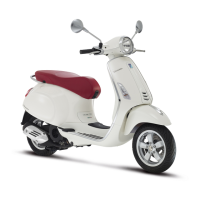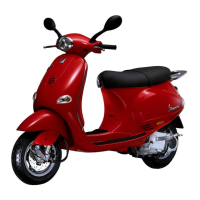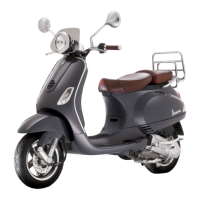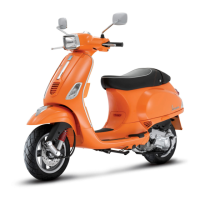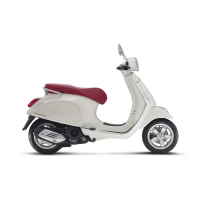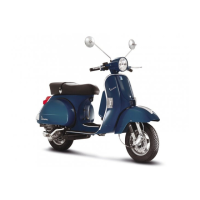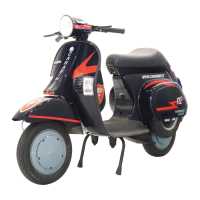
Do you have a question about the Vespa PK 50 and is the answer not in the manual?
| Bore x Stroke | 38.4 mm x 43 mm |
|---|---|
| Compression Ratio | 7.5:1 |
| Cooling System | Air-cooled |
| Transmission | 4-speed manual |
| Front Brake | Drum |
| Rear Brake | Drum |
| Width | 700 mm |
| Height | 1, 000 mm |
| Wheelbase | 1, 170 mm |
| Engine Type | Single-cylinder, 2-stroke |
| Rear Suspension | Coil spring with hydraulic shock absorber |
| Front Suspension | Single arm with coil spring and hydraulic shock absorber |
Key benefits of electronic ignition over traditional systems.
Electrical benefits: stable running, better starting, extended plug life.
Mechanical benefits: unalterable timing, reduced maintenance.
Components and function of electronic ignition for 4-pole flywheel systems.
Components and function of electronic ignition for 6-pole flywheel systems.
Basic precautions for handling electronic ignition circuits to prevent damage.
Procedures for diagnosing and resolving ignition system faults.
Guidance on verifying and adjusting engine ignition timing.
Testing low tension section of flywheel magneto in DC circuits.
Steps for testing the generator's output and performance.
Detailed steps for testing the voltage regulator's functionality.
Guide for preparing and activating a dry-charged battery.
Instructions for verifying and adjusting battery electrolyte levels.
Assess battery charge using density and voltage readings.
Steps for safely charging the vehicle battery.
Procedure for safely disassembling the starter motor.
Steps for replacing the starter pinion and free wheel assembly.
Process for overhauling steering unit and front suspension.
Guide for dismantling suspension parts like tab washers.
Specifies expected headlamp bulb voltages under various conditions.
Lists required tools and equipment for testing the voltage regulator.
Step-by-step guide for testing the voltage regulator's performance.
Interpreting test results to identify regulator anomalies or failures.
Procedure for checking engine timing with a 4-pole flywheel.
Procedure for checking engine timing with a 6-pole flywheel.
Interpreting fuel consumption results from road tests.


